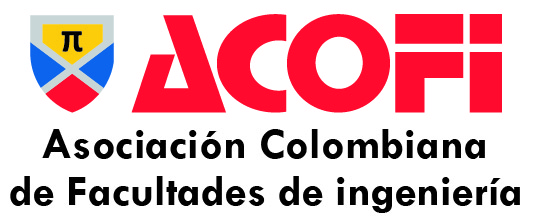Paid solvers: are those the best choice for the teaching work?
DOI:
https://doi.org/10.26507/rei.v8n15.282Keywords:
open source solver, linear programming, optimization, engineering educationAbstract
This paper presents an exploratory analysis on the convenience and feasibility of using free software or commercial software as a support tool in the teaching of subjects in engineering programs develop competence in mathematical modeling. In particular, this work presents elements to encourage discussion about the choice of commercial or free solvers for teaching linear mixed models and their solution, as initiation phase to the field of mathematical modeling. The experimental stage used the linear instances provided by the NETLIB library and its quality outcome was compared through the CPU time and the ability to provide solution to the instances in order to evaluate it as a strong criterion that will support the choice of commercial solvers instead of the open source counterparts. Two open source solvers and three well known commercial solvers were tested finding out there is no significant difference between the performances reported by the commercial application and one of the open source counterpart. As a result, the use of open source solvers should be considered as a real alternative in the teaching and solving process in the academic context.
Downloads
References
Ahuja, R.K., Magnanti, T.L., & Orlin, J.B. (1993). Network Flows. New Jersey: Prentice Hall.
Ang, J.S.K., Cao, Ch. & Ye, Heng-Qing. (2007). Model and algorithms for multi-period sea cargo mix problem. European Journal of Operational Research, 180(3), 1381-1393.
Bachouch, R.B., Guinet, A., & Hajri-Gabouj, S. (2012). An integer linear model for hospital bed planning. International Journal of Production Economics, 140(2), 833-843.
Bazaraa, M.S., Jarvis, J.J., & Sherali, H.D. (1977). Linear Programming and Network Flows. New York: Jhon Wiley & Sons.
Bergamaschi, R.A., Piga, L., Rigo, S., Azevedo, R. & Araújo, G. (2012). Data center power and performance optimization through global selection of P-states and utilization rates. Sustainable Computing: Informatics and Systems, 2(4), 198-208.
Bohle, C., Maturana, S. & Vera, J. (2010). A robust optimization approach to wine grape harvesting scheduling. European Journal of Operation Research, 200(1), 245-252.
El-Sayed, H., Ibrahim, W., & Amer, H. (2009). An adaptive heuristic algorithm for VLSI test vectors selection. European Journal of Operational Research, 199(3), 630-639.
Fourer, Robert. (2005). Software Survey – Linear Programming. Eighth in a series of LP surveys highlights recent trends in profession’s most popular software. ORMS today. Recuperado el 13-02-2013 de http://www.lionhrtpub.com/orms/orms-6-05/frsurvey.html
Free Software Foundation (2009). The free software definition. Recuperado el 6-10-2009 de http://www.fsf.org/licensing/essays/free-sw.html
Fu, L., Trudel, M. & Kim, V. (2009). Optimizing winter road maintenance operations under real-time information. European Journal of Operational Research, 196(1), 332-341.
GNU. (2009). Recuperado el 6-10-2009 de http://www.gnu.org
Han, B., Leblet, J. & Simon G. (2010). Hard multidimensional multiple choice knapsack problems, an empirical study. Computers and Operational Research, 37(1), 172-181.
Hillier, F.S., & Lieberman G.J.. Introducción a la Investigación de Operaciones, Mc Graw Hill, México, 1997.
Hock, W & Schittkowski, K. (1980). Test Examples for Nonlinear Programming Codes. Journal of Optimization Theory and Applications, 30(1), 127, 1980.
Lasdon, L. (1970). Optimization Theory for large Systems. New York: Macmillan.
Lesser General Public License. (1999). GNU LESSER GENERAL PUBLIC LICENSE recuperado el 6-10-2009 de http://lpsolve.sourceforge.net/5.5/LGPL.htm
LINGO SYSTEMS. (2006). LINGO: The modeling language and optimizer. Chicago: LINGO SYSTEMS.
Lp_Solve. (2009). Recuperado el 6-10-2009 de http://groups.yahoo.com/group/lp_solve/
Mashaei, M. & Lennartson, B. (2013). Energy Reduction in a Pallet-Constrained Flow Shop Through On–Off Control of Idle Machines. Automation Science and Engineering, IEEE Transactions, 10(1), 45-56.
Mitsutoshi, K., Takashi, I., Koji, N., Mutsunori, Y., & Hiroshi., N. (2009). Exact algorithms for the two-dimensional strip packing problem with and without rotations. European Journal of Operational Research, 198(1), 73-83.
Montoya-Torres, J.R., Aponte, A., Rosas, P. & Caballero-Villalobos, J.P. (2010). Applying GRASP meta-heuristic to solve the single-item two-echelon uncapacitated facility location problem. International Journal of Applied Decision Sciences, 3(4), 297-310.
NETLIB (2009). NETLIB Linear Programming test set [base de datos en línea]. Recuperado el 6-10-2009 de http://cuter.rl.ac.uk/cuter-www/Problems/netlib.shtml
Rossi, A., Singh, A. & Sevaux, M. (2012). An exact approach for maximizing the lifetime of sensor networks with adjustable sensing ranges. Computers & Operations Research, 39(12), 3166-3176.
Salvietti, L. & Smith, N.R. (2008). A profit-maximizing economic lot scheduling problem with price optimization. European Journal of Operational Research, 184(3), 900-914.
Winston W. L. (2004). Operations Research: Applications and Algorithms. (4ta. Ed.). Thompson.
Yi, W. (2013). Optimally Removing Intercore Communication Overhead for Streaming Applications on MPSoCs. IEEE Transactions on Computers, 62(2), 336-350.
Downloads
Additional Files
Published
How to Cite
Issue
Section
License
Total or partial reproduction of the documents published in the journal is authorized only when the source and author are cited.
| Article metrics | |
|---|---|
| Abstract views | |
| Galley vies | |
| PDF Views | |
| HTML views | |
| Other views | |









